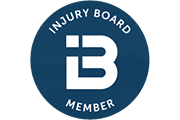As a traumatic brain injury attorney, I am always interested in new information on head injury. I am proud to live in San Francisco where we can boast that our main city and county hospital has received a prestigious brain trauma certification in the treatment for traumatic brain injury (TBI).
As a San Francisco Brain Injury Attorney, it is a part of my job to show how TBI dramatically affects the lives of brain injured people and their families. In many cases, these injuries leave individuals permanently disabled, or in need of months, and sometimes years, of rehabilitation and therapy.
 Sensory disorders are common in those with TBI, including anomalies of vision, audition, and olfaction. Recently I learned of a vision anomaly symptom evident in those with TBI: photosensitivity, or photophobia, which presents as an elevated sensitivity to light in the absence of ocular inflammation or infection.
Sensory disorders are common in those with TBI, including anomalies of vision, audition, and olfaction. Recently I learned of a vision anomaly symptom evident in those with TBI: photosensitivity, or photophobia, which presents as an elevated sensitivity to light in the absence of ocular inflammation or infection.
Photosensitivity in those with TBI has been reported:
The underlying facts behind these findings is fascinating. Those TBI sufferers affected by photosensitivity–generalized to all lights and selective to flourescent light–report:
a) fatigue with higher level cognitive tasks, including multi-tasking
b) fatigue with physical activity
c) eyestrain
d) headache or migraine
Specific to flourescent light only:
e) malaise
f) nausea
g) disequilibrium, dizziness, and possible vertigo
h) increased sensitivity to motion of visual stimuli (i.e., scrolling on computers, watching scrolling tabs on television, and watching fast-edit programs)
i) increased sensitivity to being in environments with multiple visual stimuli (i.e., crowded streets, busy malls, supermarkets)
The neurological research by Ciuffreda’s research team hypothesized that anomalies in the cortical or subcortical regions may be contributing to the perception of photosensitivity on those with TBI.
From my experiences helping clients who’ve been affected by TBI, I too would recommend a complete vision evaluation, with a neuro-optometrist, ophthalmologist, or neuro-ophthalmologist for those reporting photosensitivity. The tests would aim to rule out structural ocular anomalies as causes for the photosensitivity, such as certain anomalies of the cornea, iris, lens, retina, and optic nerve.
Photosensitivity in those with TBI may or may not resolve with time; however, by providing some means of alleviating the symptoms with tinted lenses, or the use of colored overlays, or recommending the wearing of brimmed caps (to block the illumination and visual stimuli from above) we can help the symptomatic patient.
In summary, photosensitivity/photophobia is a common symptom in those with traumatic brain injury.
About the author: Claude Wyle is an aggressive advocate for Bay Area traumatic head injury survivors. Claude has decades of experience representing those harmed by the wrongful conduct of others, and, as a Bay Area brain injury lawyer, has fought to protect the rights of those with head injuries throughout his legal career.





